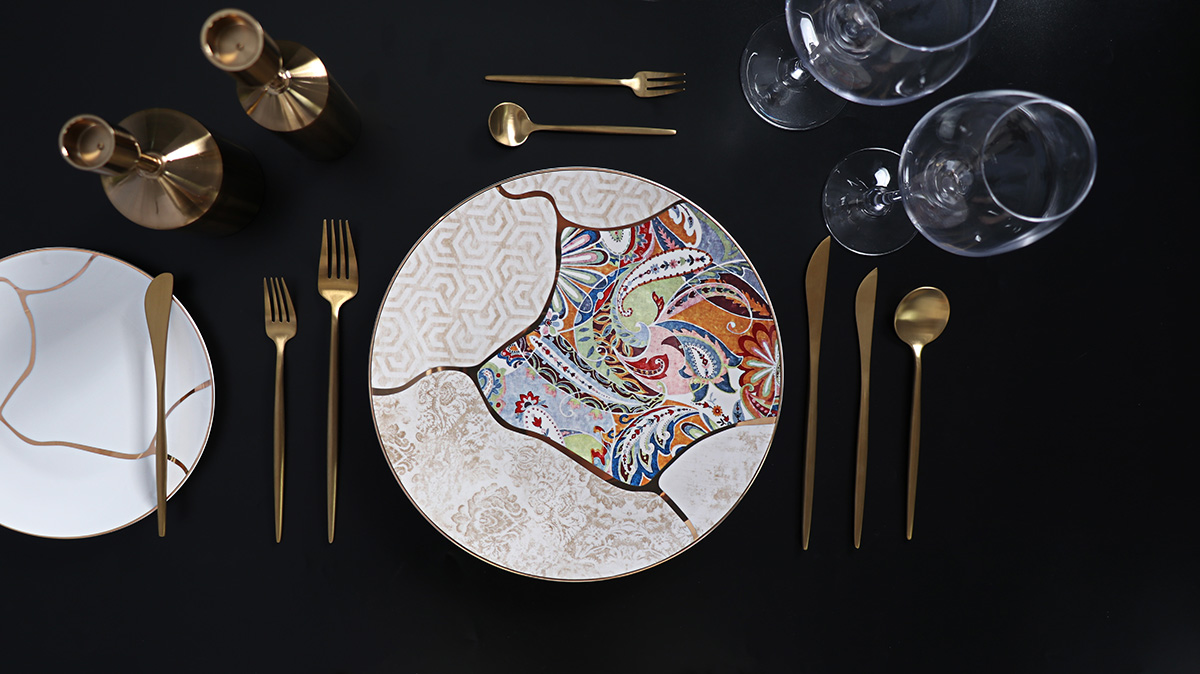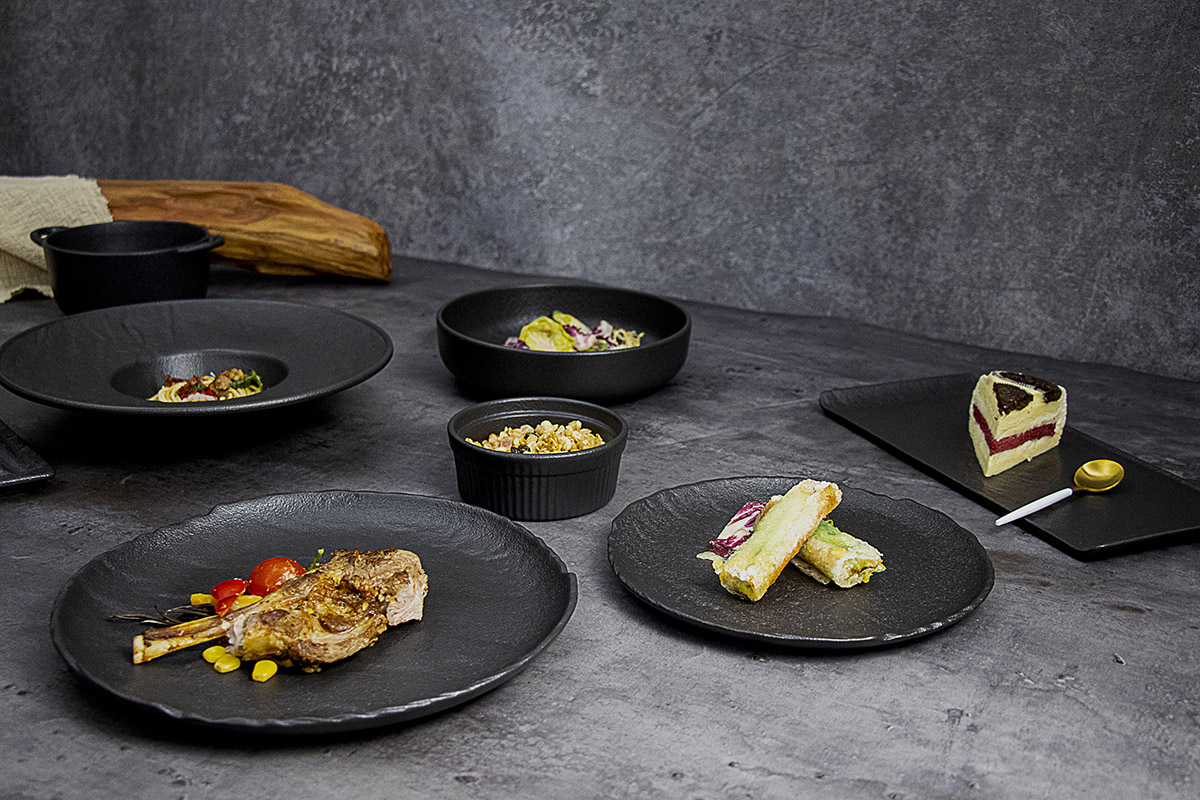Views: 0 Author: Site Editor Publish Time: 2025-03-18 Origin: Site








Have you ever wondered if there’s a difference between cutlery and utensils? While both play important roles in everyday dining, understanding their distinction can make a difference in how we approach meals. In this post, we’ll explore the key differences between cutlery and utensils, and why it matters. You'll also learn about their functions, materials, and cultural variations.

Utensils are tools used in kitchens and households for various tasks like preparing, cooking, and eating food. They can be anything from a simple spoon to a complex cooking gadget. The word “utensil” comes from the Latin word “utensilia,” which means “things to use.” These tools help us carry out essential tasks and make our lives easier.
There are different types of utensils, each serving a specific purpose. Here are a few categories:
Cooking utensils: These are used to prepare and cook food. Examples include pots, pans, ladles, and spatulas.
Serving utensils: These tools help serve food to others, such as serving spoons, tongs, cake servers, and ladles.
Eating utensils: These utensils are used directly for eating. Common ones include spoons, forks, knives, and chopsticks.
Utensils come in various materials, each offering unique advantages:
Stainless steel: Durable, rust-resistant, and easy to clean.
Wood: Gentle on cookware, ideal for stirring.
Plastic: Lightweight, affordable, but can wear down over time.
Bamboo: Eco-friendly, durable, and a sustainable choice.
The material you choose affects the tool’s performance and how long it lasts.
Utensils vary across cultures, reflecting diverse dining traditions:
Eastern cultures: In countries like China, Japan, and Korea, chopsticks are the primary eating utensils.
Western cultures: Forks, knives, and spoons are commonly used for eating and serving.
Utensils also play different roles depending on the setting. For instance, in formal settings, more specialized tools might be used to follow etiquette. In casual meals, simpler utensils are often sufficient.

Cutlery is a type of utensil focused on tools used for eating. It includes knives, forks, and spoons that help cut, slice, and carry food to the mouth. Unlike general utensils used for cooking and serving, cutlery is specifically meant for eating during meals.
Cutlery comes in different shapes and sizes, designed for various tasks:
Knives:
Chef’s knife: A versatile knife for chopping and slicing.
Paring knife: Small and used for peeling or trimming.
Carving knife: Long and sharp, used for slicing meat.
Forks:
Dinner fork: Standard fork used for main courses.
Dessert fork: Smaller and used for sweet dishes.
Salad fork: Slightly smaller than the dinner fork.
Seafood fork: Smaller with a specialized design for seafood.
Spoons:
Soup spoon: Large and round, designed for liquid dishes.
Dessert spoon: Slightly smaller for eating desserts.
Teaspoon: Small, often used for stirring drinks or measuring.
Coffee spoon: Similar to a teaspoon but slightly smaller for coffee.
Cutlery is typically made from materials that offer durability and ease of use:
Stainless steel: The most common material, known for its strength and resistance to rust.
Silver: Luxurious and polished, often used in formal settings.
Plastic: Lightweight and affordable, usually found in casual dining.
These materials ensure cutlery remains sharp, durable, and easy to clean.
In formal dining settings, the placement and use of cutlery follow specific etiquette:
Proper placement: Cutlery is arranged in the order of use, starting from the outside and working inward.
Usage rules: Each piece of cutlery is used for a specific course, such as a soup spoon for the first course and a dinner fork for the main course.
Casual vs formal: In casual settings, fewer pieces are needed, while formal dining may require more specialized tools like fish forks or dessert spoons.
The main difference is that cutlery is a subset of utensils. While utensils include a broad range of tools used in the kitchen, cutlery specifically refers to tools used for eating. Utensils cover tasks like cooking, serving, and preparing food, while cutlery is designed to help us eat or serve food at the dining table.
Utensils serve a much wider range of purposes than cutlery. They include kitchen tools for tasks like stirring, cooking, and storing food. Cutlery, on the other hand, is more specialized. It includes items like forks, knives, and spoons, all designed for eating or serving food.
The materials used for utensils are diverse. They can be made from wood, plastic, metal, or bamboo, depending on the intended task. Cutlery, however, is usually made from metal, such as stainless steel or silver, to ensure durability and sharpness for cutting or piercing food.
Cultural practices greatly influence the use of utensils and cutlery. In Eastern cultures, chopsticks are commonly used instead of forks or knives. In contrast, Western cultures rely heavily on forks, knives, and spoons for their dining experience. Each region has its own set of eating tools that align with its culinary traditions.

Early humans used basic tools for food preparation and consumption. These included sharp stones, wooden sticks, and animal bones to help with cutting and eating. As civilizations advanced, so did these tools. In ancient cultures, utensils were made from materials like wood, bone, and clay. Over time, people developed more refined tools for different food-related tasks, reflecting the growth of culture and technology.
The evolution of cutlery is deeply tied to human innovation. Initially, early forms of knives, spoons, and forks were simple and made from natural materials. For example, knives were often just sharpened stones or bones.
The Renaissance: The fork became popular in Europe during the Renaissance. It was initially seen as a luxury item but eventually spread across all social classes.
The Industrial Revolution: This period saw a significant shift. Mass production techniques allowed for the widespread availability of standardized cutlery sets. As a result, utensils like forks, spoons, and knives became common household items.
These developments transformed the way people dined and helped establish modern dining customs.
As sustainability becomes a priority, eco-friendly materials are gaining popularity. Bamboo, recycled plastics, and biodegradable materials are now used to create more environmentally friendly utensils. These materials reduce waste and are a greener choice. In the cutlery market, innovations like titanium and ceramic are being introduced. These materials are lightweight, durable, and corrosion-resistant, offering better performance for long-term use.
Modern utensils and cutlery are designed for comfort and efficiency. Curved handles and textured grips make them easier to use and hold, especially for people with limited hand mobility. Additionally, multifunctional tools are emerging, combining several utensils into one. For example, a spoon-fork combo or a knife that can be turned into a serving tool. These designs aim to make meal prep and dining simpler.
Technology is making its way into our kitchens, even in cutlery and utensils. Color-changing spoons now help you monitor the temperature of your food. There are also utensils with built-in sensors to track your eating habits or even warn you about allergens. These innovations bring new levels of convenience and safety to everyday dining.
To keep your utensils in top condition, follow these cleaning and storage practices:
Cleaning: Wash utensils immediately after use with warm soapy water. This helps prevent stains and odors from setting in.
Storage: Store utensils in a dry place to avoid rust. Use dividers in kitchen drawers to prevent scratches and tangling.
These simple steps ensure your utensils stay durable and hygienic for longer.
Cutlery requires more delicate care, especially if it’s made of silver or high-quality metal. Here are some tips:
Polishing: For silver cutlery, use a soft cloth and polish regularly to avoid tarnishing.
Avoiding rust: Dry your cutlery thoroughly after washing to prevent rust.
Dishwasher-safe vs hand-washing: Check if your cutlery is dishwasher-safe. Some items, like fine silver or high-carbon knives, should be washed by hand to maintain their shine and sharpness.
Conclusion
In conclusion, cutlery is a specific type of utensil used for eating, while utensils cover a broader range of kitchen tools. Cultural, historical, and modern trends have shaped the way we use these tools today. Think about your needs and dining occasions when choosing the right cutlery and utensils for your meals.
A: A spoon is considered a utensil, as it is a general kitchen tool. However, it can also be classified as cutlery when used specifically for eating.
A: In Eastern cultures, chopsticks are considered cutlery as they are primarily used for eating, similar to forks and spoons in Western cultures.
A: Kitchen utensils are tools for preparing, cooking, and serving food, while cutlery refers specifically to eating tools like knives, forks, and spoons.
A: Yes, utensils like knives and forks can serve as cutlery, as they are designed for both food preparation and eating.